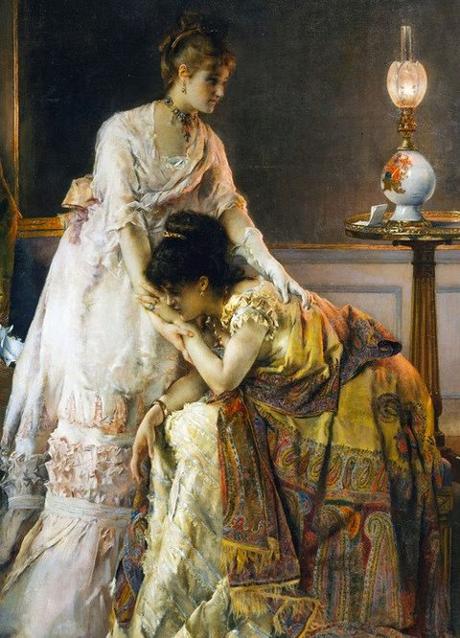 One of my hobbies is researching my British ancestry on my mother’s side of the family. Part of that process includes reading British newspapers in search of articles on my ancestors. My second grand uncle was a Justice of the Peace, Alderman, and successful businessman, so I’m always looking for articles regarding his life and have found quite a few (over thirty thus far).
One of my hobbies is researching my British ancestry on my mother’s side of the family. Part of that process includes reading British newspapers in search of articles on my ancestors. My second grand uncle was a Justice of the Peace, Alderman, and successful businessman, so I’m always looking for articles regarding his life and have found quite a few (over thirty thus far).While doing so, I stumbled across another fascinating area in the lives of men and women from 1800-1850 in regards to lawsuits for the “breach of promise of marriage.” My search has uncovered over 6,000 links to articles in newspapers across England regarding such cases.
I thought I would share with you what I noted but must do so in generic terms. Unfortunately, I cannot quote any of the articles due to copyright restrictions. I imagine, however, the situations were common. What I love most about reading these articles is the language used that is so “Jane Austen” in prose. In addition, the evidence of love letters are printed in the newspapers sometimes just referencing the content but other times printing the entire letter. Juicy indeed!
As far as jury settlements, the poor received much less, while the wealthy were assessed large sums of money. The jury deliberations were usually under an hour. The highest I have discovered out of a sampling of ten articles is £4,000 and the smallest £60. Surprisingly, not only women filed cases, but also men sued women for breach of marriage. Marriage was big business, and both parties had much to lose if one broke the engagement. Losses did not involve mere matters of the heart but the promise of fortunes gained and lost.
Here are few generalizations of what I have read:
- The ages of the parties varied. Girls as young as eighteen accepted proposals from men over the age of fifty.
- First cousins married, sometimes knowing each other from infancy and later forming attachments. This scenario reminded me of Mr. Knightly and Emma, since he was sixteen years of age when she was born.
- Men courted for the purpose of seduction. Tsk. Tsk. And yes, once they got what they wanted, they abandoned the young lady breaking their promise of marriage. The court, apparently, did not look kindly upon such instances. Unfortunately, the inevitable pregnancy happened, too, and the lady was left without support.
- Men or women could be of humble means or possess considerable property being independently wealthy. It appeared the men pursued women for money (think Willoughby), and when the engagement fell through, they sued for damages.
- Those in service together with the same employer (think Downton Abbey) fell in love but broke engagements.
- The few reasons I noted for the "breach of promise of marriage" were as follows: a) the family objected to the match (seemed to be common); b) inability to provide for both immediate family (parents) and wives at the same time; c) immoral gain of seduction without love; and d) change of heart with no other particular reason given. Solicitors painted pictures of ruined ladies who were downcast, depressed, and in ill-health both physically and mentally due to abandonment.
These articles are a goldmine of fascinating reading. The language used is priceless, and the situations typical of those in want of a wife or husband in the early 19th century. It’s a soap opera of epic proportions that I will probably enjoy reading for months to come. No doubt, they will inspire a few stories.
Vicki
